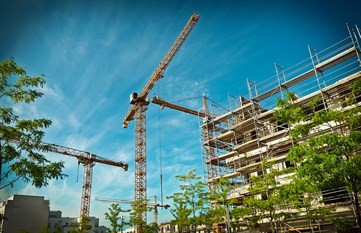Localization Strategy: Mining and Construction
Mining and construction (M&C) was one of the first modern-day industries to focus on global business opportunities. After attending a couple M&C conferences this spring, it seems that translation is mostly driven by a specific client project need rather than to attract new business in a broader marketing plan. In this blog, I will review the types of translation needs that we see from M&C industry clients.
Often times, translation needs only arise for specific client projects, but many of the larger players also have localization as part of their marketing plan and aggressively seek to control market share by being easy to find in the language of the local customers.
Why translate?

- Buyers prefer and often buy from companies that provide their company, product or service information in their native language.
- Mining and construction projects tend to have large budgets, so there will be a high translation ROI on business won due to having multilingual content.
Where to Focus your Strategy
The types of translation projects commonly seen from mining and construction clients include:
- Product and technical manuals
- Environmental reports and assessments
- Engineering reports
- Bid documents
- Safety documents and materials
- Training courses (video and documents)
- Legal agreements and contracts
- Onsite interpretation services
Translation requirements that support broader marketing campaigns can include:
- Corporate websites
- Global SEO
- Company and product brochures
- Case studies and whitepapers
Quick Tips for Mining and Construction Translation
Mining and construction companies use very specialized terminology, so the first step should be to develop a glossary of key terms in English (or other source language) and then translate the glossary. Use your in-country team to provide comments on the translated glossary. Once the translated terminology is agreed upon, then you are ready to begin translation of other content. The glossary may require some time from your team up front, but they will gain time back when they need to review the completed translation and have access to the translated glossary.
Do not rely on “someone in the office” to perform your translation just because they know the language. A localization vendor following industry best practices will develop the glossary and use three levels to translate the content: translation, edit and proof (TEP). Each of the language resources will have expertise of the industry and understand how to translate from the source language into the target language. They also should reside in the local target market.
I expect that when you develop English source content you do not just have one person write it and then publish it, a team is likely involved to review and edit the content. The same attention is needed for translated content. A vendor can also scale to support larger amounts of content by building teams of multiple translators to support required delivery time frames. Another key point in working with a language vendor is they will create a translation memory that can be used to leverage repeat content in the project and for all additional projects and updates.
Summary
While I started off stating that the mining and construction industry was an early mover in modern-day globalization, they have been slow to adopt translation into their core processes. But, we have seen this begin to change in the past few years and companies across the industry have begun to adopt translation best practices as a way to drive new business and not just to support individual projects.
